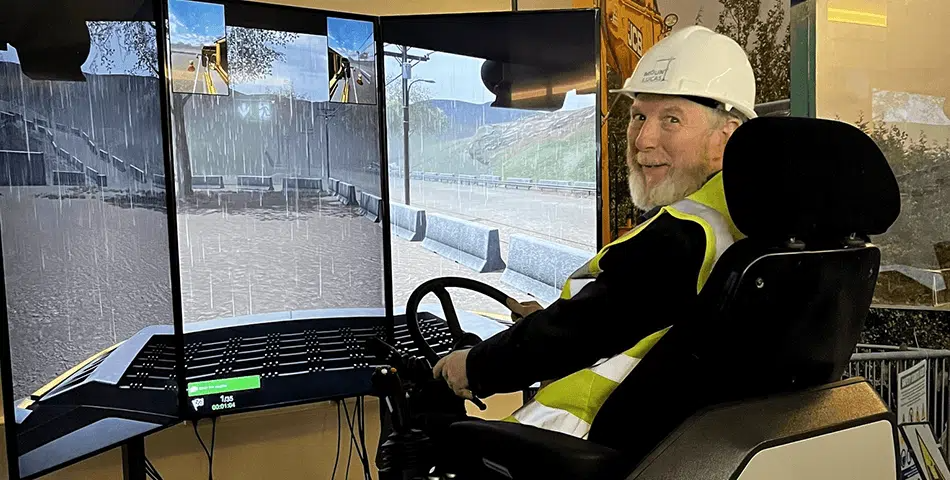5 Tips for Evaluating Simulation Tools for CTE Construction Programs

Construction CTE programs have found success in providing quality work-based learning opportunities for heavy equipment operation with the help of simulation training.
It’s not hard to see why, given many of the advantages it offers, including:
- Making it easy for educators to evaluate student performance and identify strengths and weaknesses for more targeted practice.
- Preparing students with the skills needed to pass valuable certification exams.
- Removing the liability issues of having students working on real equipment.
- Significantly shortening setup and cleanup times after lessons.
- Providing a wide variety of training opportunities to schools with access to a smaller network of local employers.
But with so many options on the market, how do you select the right simulation training tools for your program? Here are five expert tips to guide your decision-making process.
Prioritize realism and accuracy to ensure students gain experience that mirrors actual worksite conditions. High-fidelity simulations reinforce proper habits and prepare learners for safe operations in the field.
Watch out for overly simplified or “gamey” simulations, which can lead to negative training and overconfidence. Instead, test the simulation's response to unsafe maneuvers and examine environment details such as cable swing, soil behavior, and machine tipping.
Ask vendors about their research and development process to validate the realism and physics engines behind their training programs.
Instructor support tools are critical for managing students, customizing learning paths, and tracking progress. Look for tools that allow for easy lesson creation, real-time monitoring, and automated reporting. These features streamline administrative tasks and help instructors focus on teaching.
Ask vendors if their systems offer remote access, performance dashboards, and scenario customization for scalable classroom management.
Students need exposure to various types of equipment to find their strengths and gain a complete understanding of the field. Choose a provider that offers a large catalog of training packs—from excavators to cranes to loaders.
Adaptability also means the ability to tailor training paths and expand your program in the future. The more flexible the platform, the more value it brings.
Responsive and knowledgeable support is essential to maintain program uptime. Choose a partner that offers timely troubleshooting, integration assistance, and access to training resources.
Ask about service level agreements, technician availability, and whether they provide direct support or rely on third parties. You want a partner who is invested in your long-term success.
Choose a system that can grow with your CTE program. Scalable platforms allow you to add simulators and training content as enrollment increases without overhauling your infrastructure.
Ensure student progress tracking and instructor dashboards scale accordingly so you can continue providing high-quality, individualized training as your program expands.
Final Thoughts
As simulation technology evolves, staying ahead means choosing a solution that supports continuous innovation, strong technical support, and real-world realism. Look for a provider that’s committed to frequent updates and new training modules aligned with industry needs.
By focusing on simulation quality, instructor support, adaptability, scalability, and vendor reliability, your construction CTE program will be well-positioned to equip students with the skills needed to succeed in a rapidly changing workforce.



